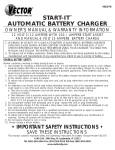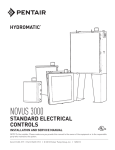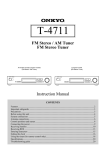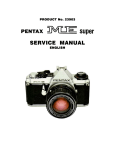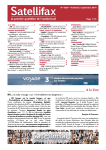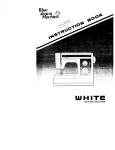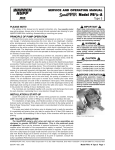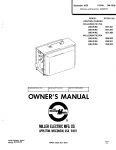Download Asahi Pentax Spotmatic Repair manual
Transcript
PRODUCT NO.23102 ASAHI PENTAX SPOTMATIC TABLE OF CONTENTS Page INTRODUCTION 2 ASSEMBLY AND ADJUSTMENT OVERVIEW 3 1. ASSEMBLY AND ADJUSTMENT OF SHUTTER AND FILM TRANSPORT MECHANISM a. Shutter Curtains b. Parallel Adjustment of Shutter Curtain Edges c. Assembly and Adjustment of Selector Gear Parts d. Assembly and Adjustment of Film Transport Mechanism e. Assembly and Adjustment of Intermediate Gear Parts f. Assembly and Adjustment of Selector Gear Mechanism g. Assembly and Adjustment of Counter Dial Mechanism h. Assembly and Adjustment of Rapid Wind Lever Seat 4 6 6 9 10 13 18 19 2. MIRROR HOUSING a. Points to be borne in mind when making adjustment b. Installation of Mirror Housing to Body Proper 20 23 3. ASSEMBLY AND ADJUSTMENT OF COUPLER GEAR PARTS 24 4. ADJUSTMENT OF SHUTTER ACTUATOR PLATE B (05140) 26 5. ASSEMBLY AND ADJUSTMENT OF X SYNCHRO CONTACT 27 6. ADJUSTMENT OF SHUTTER EXPOSURE TIMING a. Adjustment of Bounce Stopper Mechanism b. Adjustment of Shutter Curtain Speed c. Adjustment of High Speed Exposure Timing (1/60 sec-1/1000 sec) d. Adjustment of Slow Speed Exposure Timing (1 sec-1/30 sec) e. Bonding of Parts for Adjustment Purposes f. Irregularity of Exposure Timing g. Adjustment of Exposure Timing at Various Positions of Picture Format 7. ADJUSTMENT a. b. 8. OF SYNCHRO CONTACT MECHANISM Adjustment of Time Lag at X Contact Adjustment of Time Lag at PP Contact ASSEMBLY AND ADJUSTMENT OF SELF-TIMER 27 27 28 29 30 30 30 31 32 32 ADDENDUM: Exposure meter troubleshooting and repair 33 SERVICE MEMORANDUM 1: Ammmeter installation and adjustment 35 SERVICE MEMORANDUM 2: Reflex mirrot problems 37 23102 Page 1 INTRODUCTION This Service Manual is prepared for servicing Product No. 23102-Asahi Pentax Spotmatic Camera-which is an improved model of Product No. 231. While no marked basic changes exist between Product No. 23102 and Product No. 231, changes mostly pertain to the following mechanical structures Sprocket Parts Mechanical Parts on Mirror Housing of Wind-Up Shaft Side A Part of Exposure Meter, and Other Minor Parts Consequently, with the exception of the aforementioned parts, this Service Manual will also apply to Product No. 231. Classification of Parts Numbers of Product No. 23102 Parts Number is composed of five figures. Of the five figures, the first two denote the mechanical structures which are classified as follows 01 Cover Plates and Back Cover 02 Mirror Housing and Prism Seat 03 Film Winding Mechanism 04 Film Rewinding Mechanism 05 Shutter Mechanism 06 Slow Speed Shutter Mechanism 07 Slow Speed Governor 08 Self-Timer Governor 10 Exposure Meter Mechanism 12 Optical Parts 23102 Page 2 ASSEMBLY AND ADJUSTMENT Note: Before assembling, disassembled parts need a careful washing and/or dusting with either a piece of cloth or a blower. General rules are summarized below: Parts equipped with rotating shafts and/or shaft bearings should be thoroughly washed with high quality gasoline or benzine. Especially, the parts lubricated with “L” lubricants need careful washing and drying. However, the pipes containing curtain springs and governor assembly should never be immersed in cleaning liquid for washing purposes. Exposed plated and anodized parts should be throughly wiped either with a brush or with a clean piece of cloth. When stains are found, lightly wipe off the stained parts with a clean piece of cloth soaked with liquid composed of ether and alcohol at the ratio of 60% and 40%. Painted parts need only be lightly dusted with a brush. Stains on the outer surface of black-finished cameras should be wiped either with a silicon cloth (similar to the one usually used for wiping glasses and is readily available on the market) or with the aforementioned liquid (60% ether and 40% alcohol). Wipe them very lightly so as not to erase the engraved white letters. For wiping optical elements, mixed liquid comprising 70% ether and 30% alcohol should be used. For this purpose, a clean piece of cotton or hemp cloth, properly washed beforehand and entirely devoid of starch, or a piece of soft paper is recommended. For wiping plastic parts (such as Fresnel and ground glass), use mixed liquid composed of 50% ether and 50% alcohol, which gives satisfactory results. Stained mirror surface should be wiped very lightly with a piece of cloth soaked with mixed liquid composed of alcohol and ether. Ammeters, CdS cells, variable resistors and semi-fixed resistors should never be washed. It is of utmost importance to observe the right kind of lubricants, lubricating positions and lubricant quantity. Lubrication should be in strict accordance with the attached list of lube oils, as wrong use of oil will invariably result in malfunctioning of various parts and may cause defects. 23102 Page 3 1. Assembly and Adjustment of Shutter and Film Transport Mechanism a. SHUTTER CURTAINS Insert the 2nd curtain pinion shaft (05062) and pinion shaft collar (05135), one after another, into the top mec. plate (03001), and retain (05135) with the pinion shaft collar retainer screw (05136). Check if the clearance between the pinion shaft collar (05135) and the top mec. plate (03001) along the shaft direction is adequate. The pinion shaft will not rotate smoothly without an adequate clearance. Adjustment of the clearance should be made with (W6) washers. Ease the pinion shaft collar retainer screw (05136). Shift the pinion shaft collar (05135) downward. Apply (L-1) lubricant between (05062) and (03001) and then fix (05135) at its original position. Fix the bottom shaft rest assembly (05003) to the body proper (01001) with the mec. plate retainer screw (03072) and screw (SM 1.7 x 2.5). Insert the 1st curtain pinion shaft (05061) into the top mec. plate (03001). Insert the curtain shaft collar D (05076) and two 1st curtain wind shafts (05066) into (05061), and fix (05066) to (05061) with two pinion shaft retainer screws (05102). Insert the 1st curtain roller (05067) and then the 2nd curtain wind shaft (05065), around which the 2nd shutter curtain is glued, to (05062), and fix (05065) to (05062) with one of the pinion shaft retainer screws (05102). Insert the curtain shaft collar C (05075) into (05061), and (05067) and (05076) into (05062), respectively. Install the bottom ends of (05061) and (05062) into the respective holes of (05003), assemble (03001) with (01001), and retain (03072) with screw (FM 1.7 x 3). Check if the clearance of the 1st curtain pinion shaft (05061) along the shaft direction is adequate. Adjustment of the clearance should be made with (W6) washers, putting them between (05003) and (05075). Insert two 2nd curtain rollers (05068) and one curtain shaft collar A (05073) into the 1st curtain spring shaft (05059) to which the 1st curtain is fixed. Insert the other curtain shaft collar A (05073) into the 2nd curtain spring shaft (05060) to which the 2nd curtain is fixed. Insert (05059) and (05060) to the respective holes of (01001), and install the curtain shaft seat (05001) in (05059) and (05060) through the bottom of (01001), and retain (05001) with three small screws (SM 1.7 x 3). Screw one worm wheel (05040) to (05059) and another to (05060). Slowly rotate (05040) counter-clockwise 2 or 3 times with a screw-driver to tension the curtain springs. Install the worm (05041) in the hole of (05001) and gear it with (05040). Lightly screw two set screws (Set T 1.4 x 2) in (05001). Final adjustment of the curtain spring tension should be made when adjusting the curtain travel speed mentioned elsewhere. 23102 Page 4 23102 Page 5 b. PARALLEL ADJUSTMENT OF SHUTTER CURTAIN EDGES With the special tool 231K-E35-A, check if the 1st and 2nd shutter curtain edges (05023) are completely in parallel with each other at the center of the picture format. Also check if the edges (05023) are in parallel with the vertical lines of the frame of the format. If not in parallel, peel off either one of the 1st or 2nd curtain ribbons (05126) and (05127), and re-glue it correctly so that the edges are in complete parallel with each other. Note: When the shutter curtains are replaced, first install the pinions (0-05061) and (0-05062) in the camera body, and then glue the curtain ribbons (05126 & 05127), making sure that the curtain edges (05023) are completely paralleled. c. ASSEMBLY AND ADJUSTMENT OF SELECTOR GEAR PARTS The relative position of the shutter curtains and the bottom selector gear (0-05036) should be determined after assembling (0-05036) with the high speed lever (0-05005), by gearing the 2nd curtain pinion (05038) with the bottom selector gear (0-05036), in the wound condition of the shutter curtains as illustrated in Diagram 3. The relative position of the 2nd curtain edge (05023) to the vertical lines of the frame of the picture format of the body proper (01001) should be checked with the special tool 231K-A01, E23-A. Apply “L-1” lubricant on (0-05036) and (0-05062). Note: When resetting the shutter curtains to the uncocked position, do it slowly. 23102 Page 6 Insert the top selector gear (0-05035) into the selector gear shaft bearing (05043). As illustrated in Diagram 4, engage the top selector gear (0-05035) with the 1st curtain pinion (05038) so that the top selector gear stud (05085) of the top selector gear (05035) makes contact with the bottom selector gear retainer plate A (05012) of the bottom selector gear (0-05036). Overlapping of the 1st and 2nd shutter curtain edges should be adjusted as illustrated in Diagram 5. 23102 Page 7 Assemble the top speed selector retainer (0-05045) and the shaft of (0-05035) with particular attention not to change the relative position of the top selector gear (0-05035) to (0-05036), and retain it with the selector gear shaft retainer screw (05098). This can be done easily when the shutter is not cocked. (Diagram 6) Affix the counter dial actuator lever (0-03018) to the countor dial actuator lever shaft (03059), and the top 2nd gear (0-03024) to the top 2nd gear shaft (03041). Set the shutter curtains in the wound condition, and affix the stopper (03007) at a position where there is a clearance of approx. 0.2-0.3 mm between the stopper and the projected part of the top selector gear retainer plate (05015) and where there is a clearance of approx. 0.2 mm between the stopper and the outer periphery of (05015). After fixing (03007), turn the screw (Set F 1.7 x 4) on the back of the body proper (01001) until it reaches the side of (03007). Note: Do not force the screw (Set F 1.7 x 4) against (03007). Bond the screw with red lacquer through the back of the body proper (01001). 23102 Page 8 d. ASSEMBLY AND ADJUSTMENT OF FILM TRANSPORT MECHANISM First, put the sprocket collar (03058) and (W 30) onto the sprocket (03057-2) using grease G-1, the former at its top and the latter at its bottom. Install them in the body proper (01001). Then set (LW 13), (W 28), clutch ring (03095), speed dial knob retainer screw (05100) and sprocket spring (03089) onto the sprocket shaft (03054-2). Insert this assembled parts into the aforementioned sprocket (03057-2) through the bottom of the body proper (01001), and fix the bottom mech. plate (03002) onto (01001). Fasten the sprocket (03057-2) from its side with the sprocket retainer screw (03055-2), assuring that the tip of the screw go right into the long slot of (03095). While pushing the sprocket shaft (03054-2) from its bottom, rotate (03057-2) with your fingertip to check if it functions smoothly. Then push (03054-2) again from its bottom and rotate (03057-2) several times with your finger, after which lift your finger to check if (03054-2) remains recessed by dint of the functioning of the clutch but satisfactorily reverts itself to its original position once (03057-2) is again rotated. Assemble the spool (03009), top take-up spool brim (03010) and bottom take-up spool brim (03011) in one body, and install it in the spool chamber of the body proper (01001). Drop the wind-up shaft (03042) into the body proper (01001) through its upper hole and affix the wind-up shaft bearing (03043) to the body proper (01001) with small screw (SM 1.7 x 3.5) through the top mec. plate (03001). With the special tool 231 K-C 27-A, screw the bottom main gear (03027) clockwise onto the wind-up shaft (03042) through the bottom of (01001). When doing so, see to it that the wind-up shaft (03042) is retained intact with the special tool 231 K-C 27-A so that it will not rotate. While holding (03027) steadily with the special tool 231 K-C 26-A, fasten the top main gear (03026), turning it clockwise with the special tool 231 K-C 23-A. Note: Do not under any circumstances turn and fasten the bottom main gear (03027). 23102 Page 9 Slightly rotate the top main gear retainer screw (03044) clockwise with a screwdriver, and ease the force of your driver-holding hand, at which determine if the bottom main gear (03026) will revert itself steadily, say, by 2 or 3 cogs of the gear. As explained in paragraph……of the Disassembly section, when the wind-up shaft parts are replaced, adjust the torque of the spool with (W 17) washers by carefully comparing it with the torque of the spooi of another Spotrnatic in good working order. e. ASSEMBLY AND ADJUSTMENT OF INTERMEDIATE GEAR PARTS Note Lubricate the intermediate gear shaft (05048) very slightly. If oiled excessively, it will invariably result in irregularity of the shutter speed. Do not lubricate the top intermediate gear (05033) or the bottom intermediate gear (05034). Set the shutter curtain in the wound condition with the special tool 231 K-E 15-A. Turn the top main gear retainer screw (03044) with a screwdriver to position the teeth of the counter actuator dial (03021) as illustrated in Diagram 10. Paying attention not to move the wind-up shaft (03042), assemble the bottom intermediate gear (05034) with (05048) so that the square hole of (05034) will fit the square groove of the intermediate gear shaft (05048), and the top 3rd gear (C 25) will engage with (05034) and the top main gear (C 26). Turn the non-return arm (03008) clockwise with the tip of tweezers, and check if (03008) is in contact with the side of the bottom part of the bottom intermediate gear (05034). 23102 Page 10 By holding the bottom intermediate gear (05034) to prevent it from floating, turn the top main gear retainer screw (03044) clockwise with a screw-driver until the tip of the non-return arm (03008) drops into the bottom groove of the bottom intermediate gear (05034). When the force of the screwdriver is eased, the bottom intermediate gear (05034) slightly revolves clockwise with the reversing strength of the wind-up shaft (03042) and stops when it hits the non-return arm (03008). Carefully install the spill (05030) in the square hole of the bottom intermediate gear (05034). Note: Be careful not to install the spill upside down. Slowly press the spill with the tip of tweezers to check if the spill goes up and down smoothly with the tension of the spill spring (05031). Then install the top intermediate gear (05033), placing it on (05034). 23102 Page 11 If the groove of (05033), after installation, cannot be properly positioned even though the engaging position of the gear is changed, the groove of (05033) needs adjustment by filing with a fine file. Place the spill recepctacle plate (05032) on the top intermediate gear (05033), and screw the intermediate gear retainer screw (05092-1) onto the intermediate gear shaft (05048). Pressing down the spill (05030) with the tip of tweezers, turn the 1st curtain checker arm (05008) counterclockwise as viewed from the top of the body proper, and release the shutter. Check if the spiil (05030) reverts itself to its original position when the force on the spill (05030) is slowly eased. Cock the shutter again, and repeat this to determine if the spill (05030) moves up and down smoothly. 23102 Page 12 f. ASSEMBLY AND ADJUSTMENT OF SELECTOR GEAR MECHANISM (1) Assembly of high Speed Lever Parts After cocking the shutter, fix the bulb lever (05007) to the bulb lever shaft (05050). If the tip of the bulb lever (05007) hits the selector gear bottom retainer plate (05012), grind the tip of (05007) with a grindstone. Assemble the high speed lever (0-05005) with the bulb lever (05007), and insert them again into (05050). Hook the high speed lever spring (05120) on the indicator seat (05104) and screw the bulb lever nut (05103) onto (05050). Check with the tip of tweezers if both parts (0-05005 & 05007) move smoothly. (2) Assembly and Adjustment of Shutter Rod Assemble the shutter rod spring (05117-1) and the shutter rod (05051) which is calked to the release plate (05004). Insert the shutter rod (05051) into the hole of (03001) through the top of (01001) and also into the lower hole of (01001). At the same time, arrange the intermediate gear retainer screw (05092) to get into the hole of (05004). Fix an (LW 10) washer to the lower part of (05051) through the bottom part of (01001). From the front of (05051), .fasten the shutter actuator plate (05022) with two shutter actuator plate retainer serews (05088). Adjustment of (05022) should be made after the mirror housing has been assembled into the body proper (01001). The difference in height between the selector gear retainer plate B (05013) and the bulb lever (05007) must not exceed 1/3 of the thickness of the plate (05013). When the 1st curtain checker arm (05008) is released after cocking the shutter, (05013) slightly rotates and stops by colliding against the bulb lever (05007). If the bulb lever (05007) is slowly turned counter-clockwise with the tip of tweezers, it should be removed smoothly from (05013). Note: Remember to prevent the lubricant on the high speed lever (05005) from spreading over the gear parts. (3) Assembly and Adjustment of Bounce Stopper Mechanism First, temporarily fasten the bounce stopper adjust screw (05109) to the back of the body proper. Ratain the bounce stopper lever (05010) together with (W 31) with the bounce stopper screw (05101). The tip of the arm (05010) should not have such up-and-down clearance as to get loose from the head of (05109). If necessary, adjust the clearance with (W 27) washers. 23102 Page 13 (05010) should not touch the upper part of the top selector gear (05035). (4) Assembly and Adjustment of the "cocked" Indicator The "cocked" indicator (05029) must be placed between the high speed cam (05219 or 05319) and the top selector gear retainer plate (05015). Adjustment in this connection should be made by properly bending (05029) with tweezers. Contact of (05029) with either (05019) or (05015) results in irregularity of shutter speeds. (5) Assembly and Adjustment of Speed Selector Disc Affix the bulb cam (05021) and the pallet release cam (05057) to the slow speed cam (05020) with two screws (SM 1.4 x 2.0). Insert (05057) into the lower part of the speed selector disc shaft (05042—2) of the shutter rest (05002), the speed selector disc (05058—2) through its upper part, and fasten them with two screws (REM 1.7 x 3.5). 23102 Page 14 (6) Assembly of Shutter Rest Plate Cock the shutter. Assemble the governor actuator rod spring (06015) and the governor actuator rod (06008), and insert them to the hole of the bottom shaft rest (05003). Assemble the pallet release rod (06009), the pallet release lever collar (06010) and the pallet release lever top B (06006), and insert them into the hole of the bottom shaft rest (05005) as in the case of (06008). Leave the screw (Set T 1.4 x 2.5) of (06010) loosened. Apply a small quantity of “L-1 “ lubricant in the hole of the pallet release cam (05057) and on the high speed cam shaft (05047). Fix the long hole of the high speed cam (05019) onto the selector pin (05078). Without moving the high speed cam shaft (05047), match the hole of the pallet release cam (05057) of (05002) with (05047), and then place (05002) on the shutter rest column (03033) and (01001). At the same time, insert the upper end of the governor actuator rod (06008) into the hole of the bottom slow speed lever (06002), and then put the upper end of the pallet release rod (06009) into the hole of (05002). Fasten (05002) to the body proper (01001) with two screws (SM 1.7 x 3.0), and fix (05002) to the shutter rest column (03033) with the shutter rest retainer screw (05130). Move the high speed cam (05019) up and down with tweezers. Adjust the tolerance for this up-anddown movement between 0.2 mm and 0.3 mm by placing washers (W 6) onto the high speed cam shaft (05047). 23102 Page 15 Two types of the high speed cam, (05219) and (05319), are available for critical adjustment of the shutter speed. Refer to Chapter 5, b. for use of these two cams. Apply “L-1” lubricant between (06008) and (06009); and between (05002), (05003) and (06002). (7) Assembly and Adjustment of Slow Speed Governor. Match the groove of the fan-shaped gear (07009) of the slow speed governor (0-07001) with the governor actuator stud (07011), and affix (0-07001) to the body proper (01001) with two screws (FM 1.4 x 2.0). Apply a small quantity of “L-4” lube between (06011) and (07009). Cock the shutter at 1/15 or 1/30 sec. Push the pallet switch lever (07004) in front of the slow speed governor to the right as viewed from the body front. When (G 04) is hit with the pallet release lever bottom (06007), it moves to the right, and the pallet (07003) is separated from the star wheel (07008). At this point, turn (06006) and (06010) clockwise, and the tip of (06006) hits the protruded part of (05057). Pressing down the tip of (06006) onto (05057), fasten it with two set screws (Set 1. 1.4 x 2.5). Release the shutter at a speed slower than 1/30 sec. When the fan-shaped gear returns, (07003) must separate itself completely from (07008). 23102 Page 16 If set screws (Set T. 1.4 ‘x 2.5) are not properly fastened, (07003) may. hit (07008). Bond the set screw (Set T. 1.4 x 2.5) with Screw Lock bond. 23102 Page 17 g. ASSEMBLY AND ADJUSTMENT OF COUNTER DIAL MECHANISM Insert the counter dial coupler lever shaft (03062) into the counter dial coupler lever (03017) to which fix washer (W 8), counter dial ratchet (03219, 03319 or 03419), counter dial ratchet spring (03082) and counter dial coupler lever collar (03063), in this order. Holding down (03063) with a screw-driver, hook (03082) on the counter dial ratchet stud (03077) of (03219, 03319 or 03419) with tweezers. With the tip of tweezers, rotate (03017). It should move smoothly. Keep holding down (03063), slowly rotate (03044) clockwise with another screw-driver, and one of the two cogs of the counter dial actuator (03021) starts gearing with the counter dial 1st gear (03030). It is important that the two gears engage smoothly. If the gearing of the cogs is unsatisfactory, replace counter dial ratchet with a new one with proper size. For adjusting purposes, counter dial ratchet is available in three different sizes: (03219), (03319) and (03419). While still holding down (03063), install the counter dial actuator lever collar (03060) and the counter dial actuator lever spring (03083) on the counter dial actuator lever shaft (03059). For easier installation, assemble (03059) and (03083) together before hand. Place the end of (03083) into a small concave inside the body proper. 23102 Page 18 Slowly ease the force of the screwdriver holding down (03063). Do not free the screwdriver suddenly, or the parts will flip up with the tension of the counter ratchet spring (03082). Insert the rapid wind lever shaft (03039) into the counter dial 3rd gear (03032), and place this assembly on the counter dial actuator lever shaft (C 59), the counter dial coupler lever shaft (03062) and the rapid wind lever shaft seat (03064), and retain them with one rapid wind lever retainer screw (03073) and two small screws (SM 1.7 x 3.5). With tweezers, turn the tip of (03032), protruding from the upper end of (03039), counter-clockwise as far as it goes. While checking through the hole of (03039) the proper gearing condition of the cogs of (03032) with the counter dial 2nd gear (03031), slowly insert the edge of the back-cover into the groove of the body proper. If the cogs are not gearing smoothly with (03031), replace (03019) with one of a different size for readjustment. After replacement of (03019), check again if (03021) engages properly with (03030). Cock the shutter by turning (03039) counterclockwise with the special tool 231K-C22-A. Viewing through the hole of (03039), check if the engaged (03031) and (03032) advance by one notch with each shutter cocking. This confirms whether the counter dial travels by one notch with each shutter cocking. h. ASSEMBLY AND ADJUSTMENT OF RAPID WIND LEVER SEAT The top 1st gear (03022) requires no adjustment for positioning. Simply install it on (03039), and engage it with the top 2nd gear (03024). Fix the spring (03080) and two rapid wind ratchet springs (03084) to the rapid wind lever shaft (03034) in advance. Wind the spring (03080) around (03034), and hold it with your fingers. If (03084) is left simply hooked on the wind-up ratchet (03005), (03005) will invariably start turning towards the centre of (03034). To prevent this, (03005) must be positioned as illustrated in Diagram 26. Slowly insert (03039) into (03034) and put one end of (03080) onto the strap hook retainer screw (01054). Hold (03034) with your finger to prevent its reverse rotation with the tension of (03080). Insert (03084) into the groove of (03005). (03005) automatically engages with the wind-up ratchet wheel (03023) with the spring tension. When one tip of (03005) is engaged with (03023), the other tip should be between the cogs of (03023). This permits many sectional cockings for film advance and shutter cocking. See that the outside of (03080) is slightly in contact with the inside of the body proper when the notch “A” at the upper part of (03034) is positioned towards the lever stopper (03004) as illustrated in Diagram 27. 23102 Page 19 Install the rapid wind lever (03003) onto (03034) and fasten it with the special tool 231 K-C 03-A. When (03003) is cocked with one single stroke, the part “B” of (03034) must not hit (03004), however, it may hit (03034) in sectional cocking. 2. Mirror Housing a. POINTS TO BE BORNE IN MIND WHEN MAKING ADJUSTMENT Assembly of the mirror housing is comparatively easy. Consequently, only the points that should be borne in mind when fixing and/or adjusting the parts are summarized below: (1) When bonding the ground glass frame B (02109) to the mirror housing (02002), see to it that it is tightly and securely bonded with Pliobond on the shelf of the mirror housing (02002). If incorrectly bonded it may float or drift from the shelf and cause focus error. 23102 Page 20 (2) When fixing the mirror seat assembly (0-02009) to the mirror housing (02002), the “A” part of the hinge cover (02011) as shown in the following diagram should not protrude or sink itself from the back of (02002), namely, the “B” part as illustrated in diagram 29, as the shutter curtains may jam with the “A” part. Adjust (02011) correctly with pliers, where required. (3) When replacing the mirror seat assembly (0-02009) with a new one, check to see whether the mirror seat (02009) is in a twisted condition when it is down. When found twisted, adjust to keep it in a proper shape with your finger. (4) The mirror seat rest (02043) constitutes a cam. It is adjusted to maintain 45° at all times when the mirror seat is down as illustrated below. Do not loosen the screw of (02043). (5) When replacing the mirror actuator lever (02110) or mirror actuator lever top assembly (0-02018) with a new one, be sure to check that the mirror seat flips up satisfactorily and also that the extreme end of the shutter curtain actuator lever (02020) is properly positioned. First, rotate the hook plate (02014) counter-clockwise. Also rotate the lowest end of the mirror actuator lever bottom (02019) counter-clockwise, and the mirror seat will start flipping up. At the instant the “A” part of (02019) as illustrated in the following diagram is about to leave the mirror actuator lever spring 23102 Page 21 hanger A (02041) which is calked to (02018), give a stop to (02019). When thus stopped, the left side of the tip of (02020) should be positioned along with the scribed line on the side of the mirror housing (02002) or slightly more to the side of the picture-format than the scribed line. At the same time, the upper end of the tip of the mirror seat should hit on the bottom surface of the shelf of (02002). If the aforementioned process does not take place as described, file away the “A” part of (02110) as illustrated below to facilitate satisfactory functioning. Care must be exercised to file away evenly in parallel with the surface that existed before attempting to file away. 23102 Page 22 (6) When the hook release lever (02087) is replaced with a new one, try to flip up the mirror seat quietly with your finger to check if (02087) will hit against the side of the mirror seat prior to hitting on the hook release stud A (02089). If it hits, file away (02087) for adjustment. (7) Check and maintain a proper clearance of such parts as the mirror actuator lever top (02018), mirror actuator lever bottom (02019) and actuator lever A. (02085) and dia actuator lever B (02086) in the shaft direction with use of washers. The dia actuator lever A (02085) should be devoid of curvature as the side of the synchro seat (02026) serves as its stopper. b. INSTALLTION OF MIRROR HOUSING TO BODY PROPER Install the assembled mirror housing onto the body proper (01001) by screwing it with two mirror housing retainer screws (02053) through the upper part of the body proper and with two screws, one (FM 1.7 x 3.5) and one (SM 1.7 x 3.5), through the bottom part of (01001). 23102 Page 23 3. Assembly and Adjustment of Coupler Gear Parts Install the coupler pinion (05039) on the 2nd curtain pinion shaft (05062), and fasten it with the coupler pinion screw (05112) with a screwdriver inserted through the cut at the back of the body proper. Rotate (05039) to such an extent as to facilitate this fastening while winding the wind-up lever. Assemble the coupler gear (05031) after cocking the shutter. When fastening (05037) to the body proper (01001) with the coupler gear retainer screw (05105), gear (05037) with (05039), paying attention to the coupler gear stud (05113) so that it is positioned on the line where (05105) and the pallet release rod assembly (06009) are joined. Set the pinion coupler lever spring (05121) on the pinion coupler lever collar (05142) which is riveted to the pinion coupler lever (05009), and set (05142) on the pinion coupler lever seat (05108). While setting it, hang one end of (05121) on the coupler lever spring hanger (05096) and the other end on (05009). The clearance of the tip of (05009) along the shaft direction should be such that the tip of (05009) does not get loose from the coupler gear stud (05113) but does not contact (05037). Insert LW13 onto (05108). Fix the coupler lever pin adjust seat (0-03212) to the bottom main gear (03027) which is screwed into the wind-up shaft (03042) at its bottom, then place the coupler lever pin retainer plate (03096) on it, and fasten them with a screw (FM 2 x 3.5). The part of (03042) where the long slit of (03212) should be fixed is as illustrated in Diagram 35, but remember that when fixing (0-03212), the coupler lever pin-(03047) must be positioned as shown in Diagram 35 without fail. For this purpose, five types of (0-03212) are provided, each with varied angle of the long slit to facilitate proper functioning. 23102 Page 24 Fix the coupler lever (03013) and the coupler lever washer (03015) to the coupler lever shaft (03048). Insert one end of the mirror restitution spring (02066) into the hole of the mirror actuator lever bottom (02019), and put it on (03015). Fasten (03013) and (03015) with the coupler lever retainer screw (03049). Hook the other end of (02066) on (03013). 23102 Page 25 4. Adjustment of Shutter Actuator Plate B (05140) Timing in falling down of the shutter rod (05051) and flipping up of the mirror varies depending on how you adjust the shutter actuator plate B (05140) with set screw (Set F 1.7 x 3). Adjust to assure that the mirror seat (02009) flips up the instant the shutter rod (05051) is shifted, during its course of being pressed down, from its upper tapered part to its narrow straight part where it meet with the bulb lever (05007). At the instant the mirror seat (02009) flips up, there should be a clearance of approx. 0.3 mm between the under-surface of the release plate (05004) and the upper surface of the collar of the intermediate gear retainer screw (05092). Consequently, (05004) drops farther by approx. 0.3 mm the moment the mirror seat flips up. If the clearance is found excessively bigger or smaller than the limit of 0.3 mm, adjust the shutter actuator plate B (05140) again. 23102 Page 26 5. Assembly and Adjustment of X Synchro Contact Fasten the X contact seat assembly (05026) onto the body proper (01001) with two screws (FM 1.7 x 2.5). Insert two synchro cords (02081) through the bottom hole of (01001), solder one cord at the FP contact piece B (02024) and the other at the F? contact piece C (02025). 6. Adjustment of Shutter Exposure Timing a. ADJUSTMENT OF BOUNCE STOPPER MECHANISM Set the shutter speed selector disc (05058) at “B”, and place the camera on the seat of the shutter speed tester with the edge of the picture format on the side of the cassette chamber of the camera against the outer side of the last slit of the tester. While holding down the camera, set the speed selector disc (05058) at 1/60 sec. Measure the exposure timing at 1/60 sec. (16.7 ms). Since the bounce of the 1st shutter curtain has not as yet been properly adjusted at this stage, the exposure timing at the end of the picture format is generally registered much faster than at the start or at the centre of the picture format. Slightly turn the bounce stopper adjust screw (05109) clockwise through the back of the camera body. Repeat this until the exposure timing at the end is adjusted to be equal to that of the start or at the centre of the picture format. Seal (05109) with red lacquer, applying it through the back of the camera body. With considerable servicing skill, shutter bounce may be detected with unaided eyes without depending on a tester. In this event, the camera is to be pointed against a bright plane, such as a white wall, and the curtain travel is visually checked through the camera back. b. ADJUSTMENT OF SHUTTER CURTAIN SPEED In this model, the speed of the shutter curtain travel over the picture format (36 mm) is adjusted to be 14±0.3 ms approximately at 20°C. However, when our company-recommended shutter speed tester of a digital computer-type is used, it should be adjusted to be 12.5±0.3 ins, as the slits at both ends of this tester are located 2mm inward from the edge of the camera’s picture format. 23102 Page 27 Adjust the travel speed of the 1st curtain to be faster than that of the 2nd curtain by 0.05 - 0.1 ms. Adjust it as follows (1) Place the speed dial (05044) on the speed selector disc (05058) and set the speed dial at 1/1000 sec. (2) Measure the curtain travel speed. (3) Ease the two set screws (Set T 1.4 x 2) and rotate the worm (05041) clockwise to increase the shutter curtain travel speed; and counter-clockwise to slow it down. When (05041) is turned clockwise, slightly turn it counter-clockwise afterward. (4) Fasten the two set screws (set T 1.4 x 2). (5) Re-check the curtain travel speed. c. ADJUSTMENT OF HIGH SPEED EXPOSURE TIMING (1/60 sec.—1/000 sec.) (1) Measure the speed at 1; 1000 sec. (1 ms). (2) Ease the adjust nut (05111) with the special tool 225 K-F 48-A. Rotate the set screw (Set T 1.4 x 2.5) clockwise to increase the exposure timing; and counterclockwise to slow it down. Fasten (05111). (3) Re-check the speed at 1/1000 sec. At this stage, re-measure the curtain travel speed as explained in paragraph 5, b. If the travel speed is not within the tolerance, re-adjust it. (4) Check the speed at 1/125 sec. (8 ms). (5) If the speed is not within tolerance, adjust it as per 2) above. 23102 Page 28 (6) Re-check the speeds at 1/1000 sec. and 1/125 sec. respectively. If the speed either at 1,/1000 sec. or 1/125 sec. is out of tolerance, replace the high speed cam (05219 or 05319). Two types of the high speed cam, (05219) and (05319), are available for adjusting purposes. The two types of the cam differ in shape. (05219) is designed for increasing the exposure timing at 1/1000 see, while (05319) is designed to slow it down. (7) Test and determine the exposure timing at five different shutter speed settings, viz., 1/1000 see. (1 ms), 1/500 see. (2 ms), 1/250 see. (4 ms), 1/125 see. (8 ms) and 1/60 see. (16.7 ms), respectively. If the exposure timing at 1/1000 sec. and 1/125 sec. is found to be within tolerance, the exposure timing at each of the other three shutter speed settings is automatically adjusted within tolerance. d. ADJUSTMENT OF SLOW SPEED EXPOSURE TIMING (1 sec. - 1/30 sec.) (1) Measure the speed at 1/30 sec. (33.3 ms). (2) Ease the adjust nut (05111), with the special tool 225 K-E 48-A. Rotate the set screw (Set T 1.4 x 2.5) clockwise to slow down the exposure timing; and counterclockwise to increase it. After adjustment, fasten (05111). (3) Re-check the speed at 1/30 sec. (4) Measure the speed at 1/8 sec. (125 ms). (5) If the timing at 1/8 sec. is out of tolerance, adjust as per (2) above. (6) Re-measure the timing at 1/30 sec. and 1/8 sec. respectively. By repeating the measurement and adjustment, adjust the timing within tolerance. Once the exposure timing at the above two shutter speed settings has been correctly adjusted, correct exposure timing at the other speeds, 1/15 sec. (66.7 ms), 1/4 sec. (250 ms), 1/2 sec. (500 ms) and 1 sec. (1000 ms), may be automatically obtained by means of the function of the slow speed cam (05020). 23102 Page 29 e. BONDING OF ADJUSTING PARTS After adjustment of the high and slow speed exposure timing, bond the undermentioned parts with red lacquer to prevent possible loosening by vibration, etc. High speed lever adjust nuts (05111) 2 Bounce stopper adjust screw (05109) 1 Set screw (Set T1.4 x 2) for curtain shaft rest 2 f. INCONSISTENCY OF EXPOSURE TIMING If the exposure timing at the same speed setting differs after each shutter release, it is referred to as “inconsistency of exposure timing.” Strictly speaking, it is extremely difficult to maintain consistently correct exposure timing. Major causes for inconsistency may be traced to the following: (1) When the top intermediate gear (05033) is oiled or stained. (2) When the hole of the high speed cam (05219 or 05319) is dusted, or not properly oiled, or stained with grease. (3) When the 1st and/or 2nd curtain pinion shaft (05061) (05062), top mec. plate (03001) and/or shaft receptacle of the bottom shaft rest (05003) are not properly oiled. g. ADJUSTMENT OF EXPOSURE TIMING AT VARIOUS POSITIONS ON PICTURE FORMAT In a camera with focal plane shutter, the slit formed by its shutter curtains travels right in front of the picture format, thereby exposing the film successively. Therefore, it becomes necessary to measure the time of exposure at various positions of the picture format. In this camera, the above measurement should be made at 1/1000 sec. If the travel time of the shutter curtains at 1/1000 sec. is consistent and time of exposure at various positions within the picture format is likewise satisfactory, it follows that exposure timing at the slower speeds is automatically within tolerance. A digital computer type shutter speed tester indicates the time of exposure at three positions; at the start, centre and end of the picture format. In view of the characteristics of this camera, it is desirable to adjust the exposure timing at the start of the picture format slightly faster than at the centre, and the timing at the end as fast as or slightly slower than at the centre. By carefully comparing the exposure timing at the three measuring positions as indicated by the shutter speed tester, determine whether the curtain travel speed or the high speed lever (05005) should be adjusted. The exposure time at the start is adjusted mainly with (05005), while that at the end by adjusting the curtain travel speed. However, since either adjustment will change the exposure time at the three different positions, compare the exposure at the start and end, and repeat this adjustment until satisfactory results are obtained. An example of this is shown in Diagram 42. 23102 Page 30 REFERENCE “Time of exposure” usually refers to the time of exposure at the centre of the picture format. 7. Adjustment of Synchro Contact Mechanism a. ADJUSTMENT OF TIME LAG AT X CONTACT From the mechanical construction of this camera, the synchro contact piece of the camera cannot be adjusted by viewing its contact condition. Therefore, necessary adjustment should be made by checking the contact condition with the synchro measuring unit of the shutter speed tester. Set the speed at 1/60 sec. and adjust by bending the X contact A (05024) with tweezers, with the shutter cocked. Standard over 0.5 ms 23102 Page 31 b. ADJUSTMENT OF TIME LAG AT FP CONTACT Wind the shutter. Release the shutter while retaining the tip of the mirror seat (02009) with a finger. As the mirror seat has tension to flip up at this point, let it move up slowly while retaining it with the finger. See to it that the FP contact piece A (02023) hits the FP contact piece B (02024) at the instant the front upper end of the mirror seat (02009) comes to the center height of the hook retainer screw (02091), viz., when the upper end of the mirror seat is positioned approx. 3 or 4 mm lower than when it has completely flipped up. Adjustment in this respect should be made by bending (02024) with tweezers as illustrated in Diagram 33. A shutter speed tester may be also employed for this adjustment. 8. Assembly and Adjustment of Self-Timer Fasten the eccentric collar (05106) onto the shutter rod (05051) with the eccentric collar retainer screw (05094). Move the synchro cord (02081) leftward as viewed from the body front, and fix the self-timer governor (0-08001) to the body proper with a small flat screw, medium, 1.7 x 3.5 and a small saucer screw, medium, 1.7 x 3.5. Set the shutter speed dial at 1 sec. Wind the shutter. With the special tool 231 K-H21-A, rotate the wind-up spindle (08021) counter-clockwise for over 90°. Depress the tip of the release spring (08008) of the self-timer, and the self-timer begins to function. When the governor operation nears its end, the coupler lever (08005) presses down the aforementioned eccentric collar (05106), which then presses the shutter rod down. The reversion of the shutter rod may be considered satisfactory, if it reverses at about the same time when the 2nd curtain travel comes to its end at the set speed of 1 sec. This adjustment, if necessary, is made by turning the eccentric collar (05106). 23102 Page 32 SERVICE MANUAL PRODUCT NO.23102 ASAHI PENTAX SPOTMATIC CAMERA - HOW TO FIND FAULTY EXPOSURE METER AND HOW TO SERVICE IT DEFECTS: 1. Even when the AM switch lever (01069) is pushed up to switch on the meter, the needle in the viewfinder does not move. CAUSES: The voltage of the battery is getting low almost to zero. NOTE: The battery must not be less than 1.3V. a. The battery contact piece A (01017) in the battery housing (01034) fixed to the bottom cover is so bent that the battery does not contact (01017). b. The tip of the battery contact piece A (01017) in the battery housing (01034) is so bent SERVICING: 1. Replace the battery. a. Raise the tip of (01017) with tweezers and position it properly. b. Bend (01017) with tweezers and correct its position so that it does not touch (01034). laterally that it touches the inner wall of (01034). Tiny metal pieces ore in the battery housing (01034). (Refer to Figure l.a.) c. Clean the inside of (01034) thoroughly. (Refer to Figure l.a.) NOTE: Tiny metal pieces are sometimes produced by wear and tear of screws due to repeated putting on or off of the battery cover (01035). d. Tiny metal pieces are attached to the battery circuit in the synchro terminal seat (01042), causing short-circuit. 23102 d. Clean the synchro terminal seat (01042) thoroughly. Page 33 DEFECTS: CAUSES: NOTE: Push down the AM switch lever and check with a circuit tester if the battery contact piece B (01018) is electrically connected with the print wiring base (10004-). e. Even when the AM switch lever (01069) is pushed down, the switch A (05016) remains in contact with the switch B (05018). NOTE: Check in the same way as in the foregoing 1.d. 2. Broken or disconnected wire or Short-circuit inside the ammeter. NOTE: Unsolder the soldered point of the lead wire of the ammeter on the print wiring base (1004) to remove the-wire, and check with a circuit tester if the ammeter is in good working order. 23102 SERVICING: e. Adjust the position of (05016) with tweezers so that it does not touch (05018) when the AM switch lever (01069) is pushed down. (in a state that the switch actuator pin(02095) is moved to the right as shown in Figure 1. d. 2. Replace the ammeter. NOTE: 1) No interchangeability between the ammeter for Product No. 231 and that for Product No. 23102. 2) If the ammeter is in good order when tested with a circuit tester, it must indicate approx. 3kΩ. Page 34 Service Memorandum No.1 1) Product No.23102 (Spotmatic) Installation and Adjustment of Ammeter (10001) a. Fix the ground glass mask (02005), pentaprism (12004) and magnifier front element assembly (0-12005) to the prism seat (02001), if not already installed. b. Fix the ammeter (10001) to the prism seat (02001). c. Then connect the red and black clips of the 3µA tester with the red and black lead wires of the ammeter (10001), respectively. Before doing this, however, it is important to check to assure-an output of the rated 3µA current between the red and black terminals of the 3µA tester as per the instruction given under 2) below. d. While viewing through the viewfinder, adjust and fix the ammeter (10001) at a spot where the tip of the needle of the ammeter (10001) comes to the centre of the notch as illustrated below. e. With the foregoing processes, the proper installation of the ammeter is complete. 23102 Page 35 2) How to Adjust the 3µA Tester The 3µA tester must always function to discharge the rated 3µA current from its output terminals. Accordingly, before using it, check it to ensure the output of the rated 3µA current as per the following instruction. a. First, connect the red and black terminals of the 3µA tester with the red and black lead wires, respectively, as illustrated on the previous page. b. Then connect the red and black clips of the lead wires to the minus (-) and plus +}) terminals, respectively, of a circuit tester which is capable of measuring 3µA current. c. Watching the reading of the circuit tester, adjust the current of the 3µA tester by turning the adjusting knob with a screwdriver until the circuit tester reads 3µA If the reading is below the rated 3µA, turn the knob clockwise: if it is above, turn the knob counter-clockwise. d. With the foregoing processes, the 3µA tester now discharges the rated current. e. When not in use, be sure to switch off the tester. f. Use Mallory RM640, National M-N mercury battery or equivalent for the tester (the same one used for the SPOT Exposure Meter.) When the needle does not move when connected with the circuit tester, the battery may be considered as exhausted. Replace the battery. g. The switch of the tester will be “on” (or “off”) at a first push of the button, or will be “off” (or “on”) at a second push of the button, as the case may be. Therefore, push the button at least twice. In the event the needle does not move even at a second push, it is due to the exhaustion of the battery. 23102 Page 36 Service Memorandum No.2 Product No.23102 (Spotmatic) Major Troubles and Causes of Malfunctioning Mirror. 1. Mirror flips up only one third. Causes: 2. Servicing: a. The mirror seat spring (02065) is weak. Replace (02065) b. The dia. lever joint spring (02119) is too strong. Adjust or replace (02119) c. The mirror actuator lever top assembly (02018) and/or the mirror actuator lever bottom assembly (02019) are short-greased, or do not function satisfactorily because the components are too tightly fixed. Re-assemble either or both assemblies. d. The 2nd dia. lever (02015) is shortgreased. Lubricate (02015) Mirror does not flip up completely. Causes: 3. Servicing: a. The mirror actuator lever (02110) is filed excessively. Replace (02110) b. The mirror seat (02009) is bent. Replace (02009) c. The mirror shock absorber (02079) is misaligned. Adjust or replace (02079) d. The mirror seat spring (02065) is too weak. Replace (02065) The shutter curtains do not travel at the instant of mirror flipping up. Causes: Servicing: a. The mirror actuator lever (02110) is inadequately filed. Adjust (02110) b. The mirror seat (02009) is bent. Replace (02009) 23102 Page 37 Points to be remembered when making adjustment. 1.b. Release the shutter at “B”. While pressing the shutter button, measure the pressure of the lst dia. lever (02029) with use of the tension guage, at the spot where the lever presses the dia. pin of the lens. The pressure should not exceed 320g, cm. In case the pressure is over and above this limit, the tension of the mirror seat spring (02065) would not be strong enough to flip up the mirror by winning over the tension of the dia. lever joint spring (02119). Therefore, when the pressure is over and above 320g, cm. , adjust the degrees of the angle of (02119) with tweezers or pliers to keep the pressure within the tolerance of 280g, cm. - 320g, cm. Remember that if the pressure is below 280g, cm. , the dia. coupling time would be unfavourably affected. l.c. When (02065), (02018) and (02019) do not function satisfactorily, the usual cause may be traced to an improper positioning of the hook of (02065). When (02065) is replaced, be sure to check carefully if the hook of (02065) is correctly positioned. Put your flnger on the tip of (02019) and try to tension (02065), and from the feelings of your finger as well as from the sound of the ports, you can find out if (02065) and (02019) are functioning well. 2.c. In case where the old type 4mm-wide shock absorber (02079) is used, shorten its width by lmm. Where required, cut off both ends of (02079) so that the entire shock absorber can be covered completely by the mirror seat. 3.a. When the curtain actuator lever (02020) calked to (02018) does not attain its position when the mirror actuator lever top assembly (02018) stops its movement due to the flip- up of the mirror, file away the slanted port of the tip of (02110) that touches (02037). However, care must be exercised not to file away the port to on excess because if filed away excessively, it will result in incomplete flipping-up of the mirror. 23102 Page 38 DEFECTS: CAUSES: SERVICING: 1. The voltage of the battery is getting low; perhaps not to zero, but is below 1.3V. 1. Replace the battery. 2. Faulty indication of the needle of the ammeter. 2. Replace the ammeter. Correct exposure cannot be obtained, NOTE: Pictures taken are either extremely over-exposed or under-exposed. How to check it: Push down the AM switch lever (01069) to switch off the meter. First, determine if the needle is in the “off” positbon when the camera is held at a right position. Then determine the exact “off” position of the needle by pointing the camera to different directions, viz., upward, downward, to the right and then to the left. See to it that the camera once reverted to and held at a right position before turning it to any other directions. When the camera is turned to any of these directions, the needle must always rest at the right “off” position. In the event the resting place of the needle varies each time the camera is turned, the ammeter may well be considered faulty. 23102 Page 39 DEFECTS: CAUSES: SERVICING: 3. The resistance values of CdS cell are inconststent. How to check it: Test whether or not the needle functioning of the meter is correct with the Light Value Correction Unit. Refer to Service Memorandum dated 5 October 1964 under the sublect “Adapter for tight Value Correction Unit for Checking Spotmatic.” 3. Replace CdS cells. NOTE: CdS cells are divided into three types and are wrapped and supplied in envelope marked red, blue or white, according to the Sensitivity. The variable resistor (010008) is also divided into three types according to its characteristics. Thus, CdS cells and variable resistor marked with the same colour are combined and assembled as a unit. Consequently, when replacing CdS cells, use the CdS cells in envelope marked with the same colour as that painted on the side of the variable resistor (10008). Also remember that the two CdS cells installed have to be replaced at the same time, as it is extremely difficult to determine which one of the CdS cells is defective. When installing CdS cells on the prism seat, see to it that the shorter lead wire come to the viewfinder sides, as illustrated. At present, lead wire of CdS cells is covered wit’h a green coloured tube. However,CdS cells ore expected to be supplied in the future in tubes with red, blue or white colour according to the sensitivity. 23102 Page 40 DEFECTS: Even when the warning signal (the index of the shutter speeds) turns to red, the needle of the meter does not rest properly. CAUSES: SERVICING: The two terminal plates (10029) affixed to the variable resistor do not make contact with the contact piece (10032). Set the ASA scale on the shutter speed dial at ASA 100 and the shutter speed at “B” and bend (10029) with tweezers so as to make it contact with (10032). NOTE: When the index turns to red, the needle must drop to the (—) side beyond the “off” position. 23102 Page 41




















































